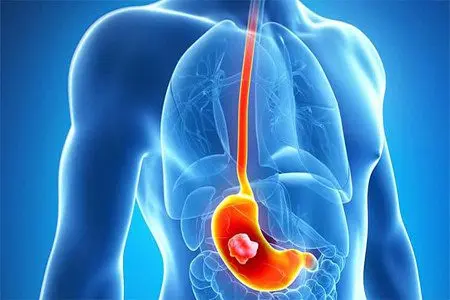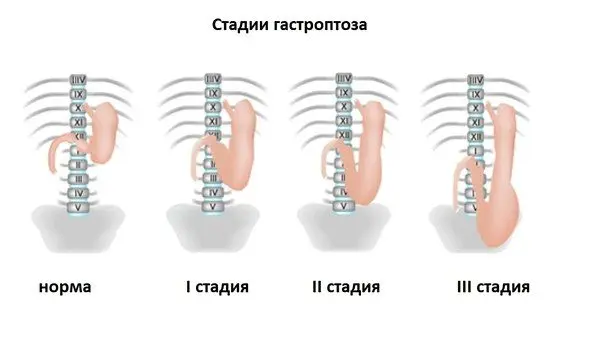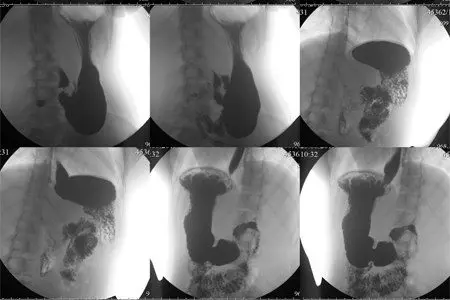Contents

Gastroptosis is the prolapse of the stomach in relation to the conditional line that connects the protruding wings of the ilium of the pelvis.
As a result of a pathological condition, the organ changes its natural location and shifts down. Structural abnormalities characteristic of the disease that occur after birth are called acquired gastroptosis. The congenital form is constitutional, it develops in the prenatal period.
At the initial stage, acquired gastroptosis does not lead to digestive disorders and does not have severe symptoms. Discomfort and signs of the disease appear at the 2-3rd stage.
The displacement of the organ can have a different degree of severity. Women aged 16 to 50 are most susceptible to the disease.
Causes of gastroptosis

Constitutional gastroptosis is typical for people with asthenic physique. An underdeveloped muscular system is the main cause of gastric prolapse.
Acquired gastroptosis develops against the background of weakening of the abdominal muscles and ligaments of the stomach, caused by various factors of a burdened anamnesis:
sharp weight loss;
surgery to remove a neoplasm in the abdominal cavity;
chronic hypotension of the stomach;
deficiency of protein foods in the diet;
frequent labor activity;
surgery to remove ascites;
chronic avitaminosis;
depletion of the body’s resources as a result of a serious illness;
intense strength training and heavy sports.
Acquired gastroptosis may be associated with visceroptosis, a prolapse of the kidneys and abdominal organs that occurs as a consequence of this disease.
Partial gastroptosis, which is called antropyloroptosis, is the most common form of pathology. As a result, the stomach cavity lengthens, the intestines descend, and the motility of the gastrointestinal tract decreases.
With total gastroptosis, which occurs after pleurisy or emphysema, the diaphragm descends and the gastric vault is distorted.
As a result of observations, it was revealed that women who gave birth to a child most often suffer from acquired gastroptosis. The changes that occur in the body during the period of gestation contribute to the development of pathology due to the weakening of the muscles of the abdominal cavity.
Signs and symptoms of gastroptosis
Depending on the degree of prolapse of the organ, 3 stages of gastroptosis are distinguished:
I – the fornix of the stomach is 2-3 cm above the comb line.
II – the arch of the stomach is on this line.
III – located below the comb line.
At the first stage, the disease can proceed without pronounced symptoms, quite often the patient does not bother at all. In some cases, patients may notice a feeling of heaviness in the epigastric region, most often after overeating. The appetite of such people acquires an unstable character with a predominance of cravings for spicy spices and dishes, while dairy products, on the contrary, cause disgust. Patients suffer from nausea that appears for no apparent reason, as well as frequent belching and flatulence.
The symptoms of gastroptosis also include constipation, which develops due to a slowdown in intestinal motility and ptosis of its transverse colon, which makes it difficult for the natural movement of feces.

Stages II and III of gastroptosis are accompanied by more pronounced symptoms:
severe pain in the stomach area;
belching;
nausea;
protrusion of the abdomen, aggravated in a horizontal position;
excessive sweating;
frequent urination;
irradiation of pain in the lower back and heart;
rumbling belly;
increased gas formation;
change in taste preferences – aversion to dairy products, cravings for spicy dishes;
defecation disorders;
increased irritability;
decrease in working capacity.
Pathology often occurs against the background of hypotension of the stomach, which is accompanied by a decrease in the secretory function of the organ, in addition, gastroptosis may be accompanied by prolapse of other organs (liver, kidneys). At the same time, with gastroptosis, the process of digestion in the stomach, as well as the process of emptying the intestines, is not significantly disturbed.
When making a diagnosis, the doctor notes the pendulous appearance of the abdomen. In a patient, when moving to a horizontal position, the upper part of the abdomen slightly sinks and a pulsating aorta becomes noticeable. Pain in such patients can be removed by pulling the peritoneum in a vertical direction.
In addition, the outline of the stomach is pronounced, while palpation reveals a noticeable prolapse of the pyloric part and the region of the greater curvature of the stomach. An x-ray examination shows a stretching of the stomach in the vertical direction, convergence of the lesser and greater curvature, as well as a deepening of the lower pole of the stomach into the pelvic area.
Constitutional gastroptosis is accompanied by complaints of a neurotic nature, such patients also have disorders of the autonomic nervous system: circulatory disorders, increased heart rate, increased irritability, profuse sweating, dermographism of the extremities.
Diagnosis of gastroptosis

If symptoms of gastric prolapse appear, it is recommended to seek advice from a specialized specialist. The treatment of gastroptosis is carried out by a gastroenterologist. To make a diagnosis, the anamnesis, symptoms are studied, and a physical examination of the patient is performed.
Signs of gastroptosis, detected during physical examination:
flabbiness and sagging of the abdomen;
pronounced outline of the stomach;
sensation of pulsation in the abdominal segment of the aorta;
reduction of pain as a result of the displacement of the abdominal organs upward;
prolapse of the pylorus of the stomach, which is determined by palpation.
The clinical picture of gastroptosis is similar to a stomach ulcer, gastritis and other diseases of the gastrointestinal tract. To make an accurate diagnosis, laboratory diagnostic tests are prescribed.
[Video] Express self-diagnosis of gastric prolapse + correction exercise:
Diaphragmatic breathing
Put one hand on the upper part of the chest, place the other just below the chest. Take a slow breath through the nose and at the same time tighten the abdominal muscles so that the stomach is drawn in, forcing the hand to lower when exhaling through pursed lips. The hand on the upper part of the chest should remain motionless.
Medication
Drug treatment for gastroptosis is symptomatic and is aimed at normalizing digestion, which helps to reduce pain and other discomfort caused by pathology. With the development of concomitant diseases associated with gastric prolapse, a drug treatment regimen is being developed to correct associated disorders and improve the quality of life of the patient. The scheme is developed by a gastroenterologist after an internal consultation and preliminary diagnosis.
With severe constipation, patients are prescribed laxatives. Antispasmodic drugs help relieve pain. Stimulants of gastric secretion are prescribed to improve digestion. With an unstable psycho-emotional state and increased irritability, sedatives are recommended.
[Video] Academician Kartavenko – how to raise the stomach:









